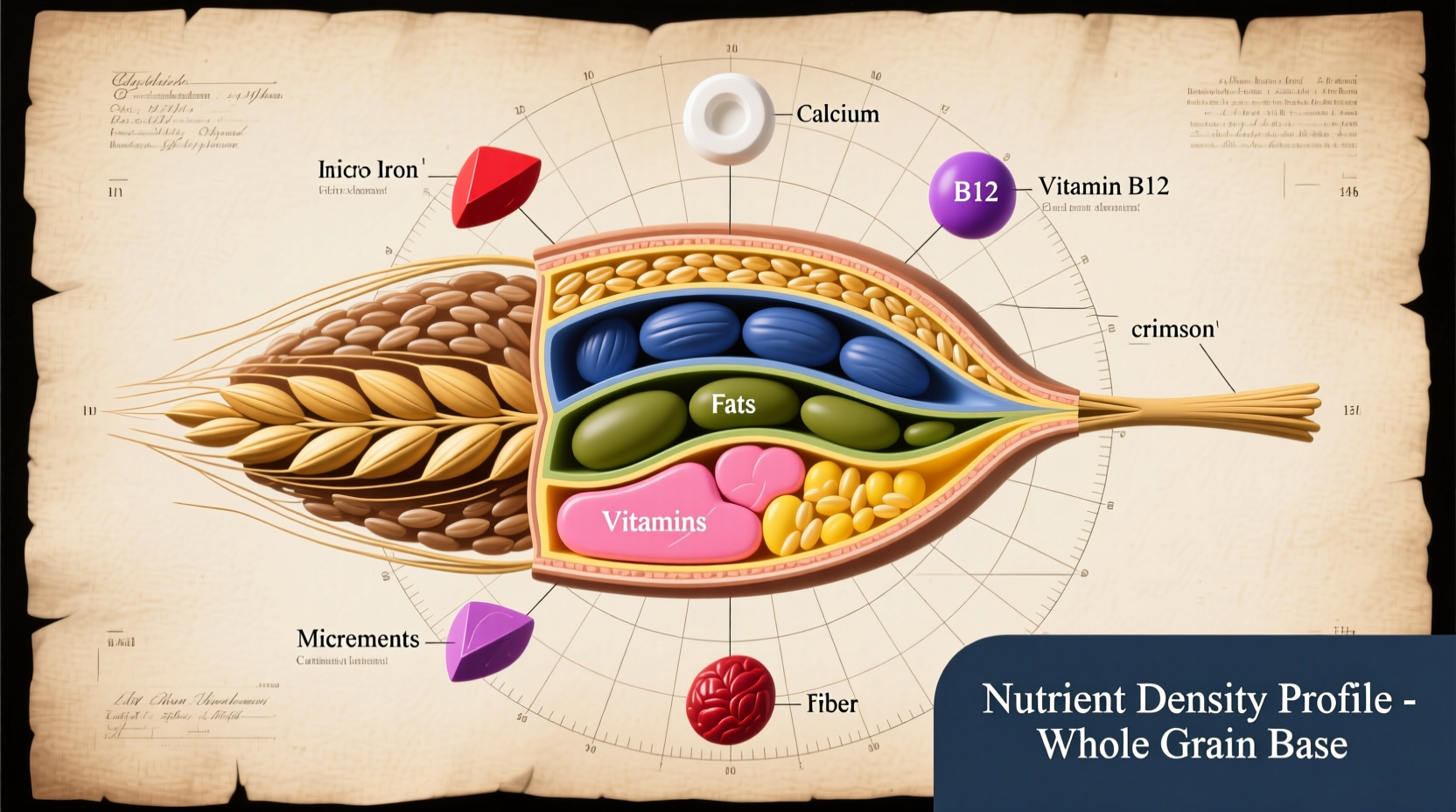Understanding what qualifies as food goes beyond simple hunger satisfaction—it's about recognizing substances that provide essential nutrients for survival, growth, and health maintenance. This foundational knowledge helps you make informed dietary choices, understand nutrition labels, and distinguish between truly nourishing options and empty calories. In this comprehensive guide, we'll explore the scientific, cultural, and practical dimensions of food that affect your daily eating decisions.
The Scientific Definition of Food
From a biological perspective, food must meet specific criteria to qualify as such. True food provides energy (measured in calories) and contains essential nutrients that the body cannot synthesize in sufficient quantities. These include nine essential amino acids, essential fatty acids, vitamins, and minerals. Unlike mere edible substances, actual food supports metabolic processes, tissue repair, and overall physiological function.
Nutrition scientists classify food based on its macronutrient composition—carbohydrates, proteins, and fats—which provide energy, and micronutrients like vitamins and minerals that facilitate bodily processes. Water, while not providing calories, is also considered a fundamental food component due to its critical role in hydration and metabolic functions.
What Makes Something Food? Essential Characteristics
Not everything we consume qualifies as proper food. Genuine food must possess these critical attributes:
- Nutritional value—provides measurable nutrients the body requires
- Metabolic utility—can be processed by the body for energy or building blocks
- Non-toxicity—safe for consumption without harmful side effects
- Cultural acceptance—recognized as edible within relevant cultural contexts
Consider how these criteria apply in real life: while technically edible, pure sugar lacks sufficient nutritional value to qualify as complete food, though it provides energy. Similarly, certain substances like activated charcoal might be safe but offer no nutritional benefit, placing them outside the definition of proper food.

Food Evolution Timeline: From Survival to Science
Human understanding of food has evolved dramatically throughout history:
| Era | Food Understanding | Key Developments |
|---|---|---|
| Prehistoric | Trial and error identification | Early humans distinguished edible from poisonous through observation and experimentation (National Institutes of Health, nih.gov) |
| Agricultural Revolution | Domestication of food sources | Systematic cultivation of grains and domestication of animals transformed food availability (UN Food and Agriculture Organization, fao.org) |
| 19th Century | Nutritional science emerges | Discovery of proteins, carbohydrates, and fats as essential food components |
| Modern Era | Comprehensive nutrient profiling | USDA FoodData Central database catalogs nutritional composition of thousands of food items |
Food vs. Non-Food: Clear Boundaries
Understanding what qualifies as food requires recognizing important distinctions. The following comparison clarifies common misconceptions:
| True Food Characteristics | Non-Food Substances | Gray Area Products |
|---|---|---|
| Provides essential nutrients | Nutritionally empty (e.g., pure sugar) | Fortified products with added nutrients |
| Supports bodily functions | Provides only calories without nutrients | Functional foods with health claims |
| Naturally occurring or minimally processed | Highly processed with artificial ingredients | Processed foods with whole food ingredients |
| Recognized as edible across cultures | Culturally specific non-food items | Cultural delicacies with limited acceptance |
Practical Applications: Identifying Real Food
Applying food knowledge in daily life requires understanding these practical considerations:
When evaluating whether something qualifies as proper food, examine its ingredient list. Whole foods typically have one ingredient (an apple, salmon, spinach), while processed foods contain multiple components. The presence of unfamiliar chemical additives often indicates a product has moved away from being considered true food.
Nutrition experts recommend following the "plate method"—filling half your plate with vegetables, one-quarter with protein, and one-quarter with whole grains—to ensure you're consuming proper food that meets all nutritional requirements. This approach naturally incorporates foods that provide complete nutrition rather than partial substitutes.
Cultural Contexts and Food Definitions
Cultural perspectives significantly influence what societies consider food. While Western nutrition science focuses on biochemical composition, many cultures define food through traditional practices and spiritual significance. In Japan, for example, the concept of shokuiku (food education) emphasizes not just nutritional value but the cultural and social aspects of eating.
Anthropological research shows over 300 plant species serve as staple foods worldwide, yet just three—rice, wheat, and maize—provide more than half of global plant-derived calories (Food and Agriculture Organization of the United Nations). This diversity highlights how cultural context shapes food definitions while scientific principles remain consistent.
Frequently Asked Questions
What scientifically qualifies as food?
Scientifically, food must provide essential nutrients including carbohydrates, proteins, fats, vitamins, and minerals that support bodily functions. The substance must be metabolizable, non-toxic in normal consumption amounts, and contribute to energy production or physiological processes according to nutritional science standards.
Can something be edible but not considered food?
Yes, many edible substances don't qualify as complete food. Pure sugar provides energy but lacks essential nutrients. Similarly, certain food additives and artificial sweeteners are safe to consume but don't provide nutritional value necessary for them to be considered proper food.
How do nutritionists determine if something is real food?
Nutritionists evaluate three key factors: nutrient density (nutrients per calorie), processing level, and ingredient quality. Real food typically has recognizable ingredients, minimal processing, and provides multiple essential nutrients. The USDA Food Patterns and MyPlate guidelines help identify foods that contribute meaningfully to a balanced diet.
Does water count as food?
While water doesn't provide calories, it's considered a fundamental food component due to its critical role in hydration and metabolic processes. The human body can survive only about three days without water, making it essential for life alongside traditional food sources. Nutrition science classifies water as a vital dietary component.











 浙公网安备
33010002000092号
浙公网安备
33010002000092号 浙B2-20120091-4
浙B2-20120091-4